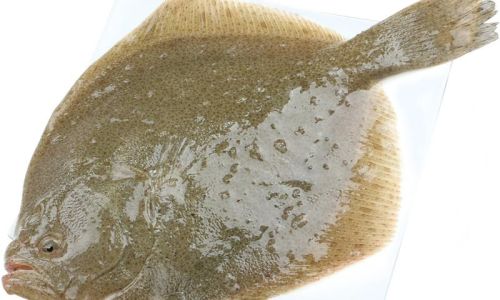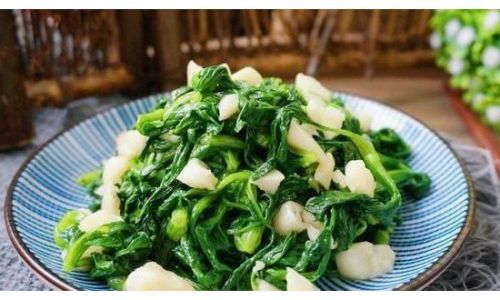Introduction
Turbot fish, known scientifically as Scophthalmus maximus, is a highly esteemed seafood delicacy renowned for its delicate flavor, firm texture, and nutritional benefits. Its popularity spans across various culinary traditions, making it a staple in gourmet restaurants and households alike. However, when it comes to frozen turbot fish, ensuring its freshness can be a challenging task. The quality of frozen fish can degrade over time due to improper handling, storage conditions, and thawing processes. Therefore, knowing how to discern between fresh and stale frozen turbot is crucial for maintaining the integrity of your meal and safeguarding your health.
In this comprehensive guide, we will delve into the various aspects and techniques that can help you accurately assess the freshness of frozen turbot fish. From understanding the importance of proper freezing techniques to examining physical indicators and conducting sensory evaluations, this article aims to equip you with the necessary knowledge to make informed purchasing decisions.
Understanding the Freezing Process

Before discussing how to determine freshness, it’s essential to understand the freezing process and its impact on fish quality. Freezing preserves food by slowing down the biochemical reactions that cause spoilage, such as bacterial growth and enzymatic activity. However, the effectiveness of this preservation method largely depends on how quickly the fish is frozen and the storage conditions thereafter.
-
Rapid Freezing: Turbot fish should be frozen as quickly as possible to minimize the formation of ice crystals, which can damage the fish’s cells and affect its texture upon thawing. Quick-freezing techniques, such as blast freezing or immersion freezing, are preferred for maintaining the highest quality.
-
Storage Temperature: Once frozen, turbot should be stored at a consistent temperature of -18°C (-0.4°F) or below to prevent any thawing and re-freezing cycles, which accelerate spoilage.
-
Packaging: Proper packaging is vital to protect the fish from air exposure, which can lead to oxidation and off-flavors. Vacuum-sealed or airtight packaging is ideal for maintaining freshness.
Physical Indicators of Freshness
When inspecting frozen turbot, there are several physical characteristics you should look for to gauge its freshness:
-
Appearance:
- Color: Freshly frozen turbot should have a silvery-gray to white appearance on its skin side, with firm, moist flesh that retains its natural color. Discoloration, such as dark spots or yellowing, can indicate spoilage.
- Ice Formation: Minimal ice crystals on the surface are a sign of rapid freezing. Excessive ice or frost can mean the fish was frozen slowly or has undergone temperature fluctuations.
- Packaging Integrity: Check for any signs of damage to the packaging, which could indicate that the fish has been exposed to air or thawed and re-frozen.
-
Texture:
- Firmness: Press gently on the fish through the packaging. Freshly frozen turbot should feel firm and resilient. Soft or mushy flesh can indicate freezer burn or prolonged storage.
- Moisture: The fish should not appear dried out or have visible moisture loss.
-
Smell:
- Odor: Although it might be challenging to detect through packaging, freshly frozen turbot should have a mild, clean scent. Strong, fishy odors or off-smells are indicative of spoilage. If possible, open the packaging slightly to get a closer sniff, but be mindful of cross-contamination risks.
Sensory Evaluation Upon Thawing
Once you’ve thawed your turbot, a more thorough sensory evaluation can be conducted to confirm its freshness:
-
Appearance:
- Color: Upon thawing, the flesh should maintain its natural color, with no discoloration or darkening.
- Clarity of Fillets: The fillets should be clear and translucent, with no cloudy or murky appearance.
- Moisture: The fish should retain its moisture, with no excessive liquid seeping out.
-
Texture:
- Firmness and Elasticity: Fresh turbot should feel firm to the touch and spring back when pressed gently. A flabby or mushy texture is a sign of spoilage.
- Separation of Flesh: Check for any separation between the flesh and the skin or between muscle fibers. This can indicate that the fish has been frozen for too long or improperly handled.
-
Smell:

- Freshness: Freshly thawed turbot should have a mild, slightly sweet scent. Avoid any fish that smells strongly fishy, sour, or ammonia-like, as these are signs of decomposition.
-
Taste:
- Flavor: A small taste test can provide the ultimate confirmation of freshness. Fresh turbot should taste clean, mild, and slightly sweet. Avoid any fish with a metallic, sour, or bitter flavor.
Additional Tips for Ensuring Freshness
Beyond the physical and sensory evaluations, there are additional steps you can take to ensure you’re purchasing and handling high-quality frozen turbot:
-
Source Reliability: Purchase your turbot from reputable suppliers who prioritize quality and adhere to strict freezing and storage protocols.
-
Check Labels: Look for information on the packaging regarding the date of freezing, best-before dates, and storage conditions. This information can provide valuable insights into the fish’s freshness.
-
Proper Thawing: Thaw turbot in the refrigerator overnight or under cold running water. Avoid thawing at room temperature, which can promote bacterial growth.
-
Cooking Promptly: Once thawed, cook the turbot immediately to prevent any further loss of quality.
-
Storage After Purchase: If you’re not planning to cook the turbot immediately after purchasing, ensure it remains frozen until you’re ready to use it. Proper storage in a freezer set to the correct temperature is crucial.
Conclusion
Determining the freshness of frozen turbot fish requires a combination of understanding the freezing process, examining physical indicators, and conducting sensory evaluations upon thawing. By adhering to these guidelines, you can ensure that you’re serving your family and guests a delicious, nutritious, and safe meal. Remember, the key to enjoying the best quality turbot lies in careful selection, proper handling, and timely consumption.
In summary, here are the main points to remember:
- Rapid freezing and consistent storage temperatures are crucial for maintaining freshness.
- Look for silvery-gray to white skin, firm flesh, minimal ice crystals, and intact packaging.
- Conduct a sensory evaluation upon thawing, checking for color, texture, smell, and taste.
- Purchase from reputable suppliers, check labels for freezing and best-before dates, and thaw and cook promptly.
By following these practices, you can confidently enjoy the exquisite taste and texture of fresh frozen turbot fish, elevating your culinary experiences to new heights. Happy cooking!






0 comments